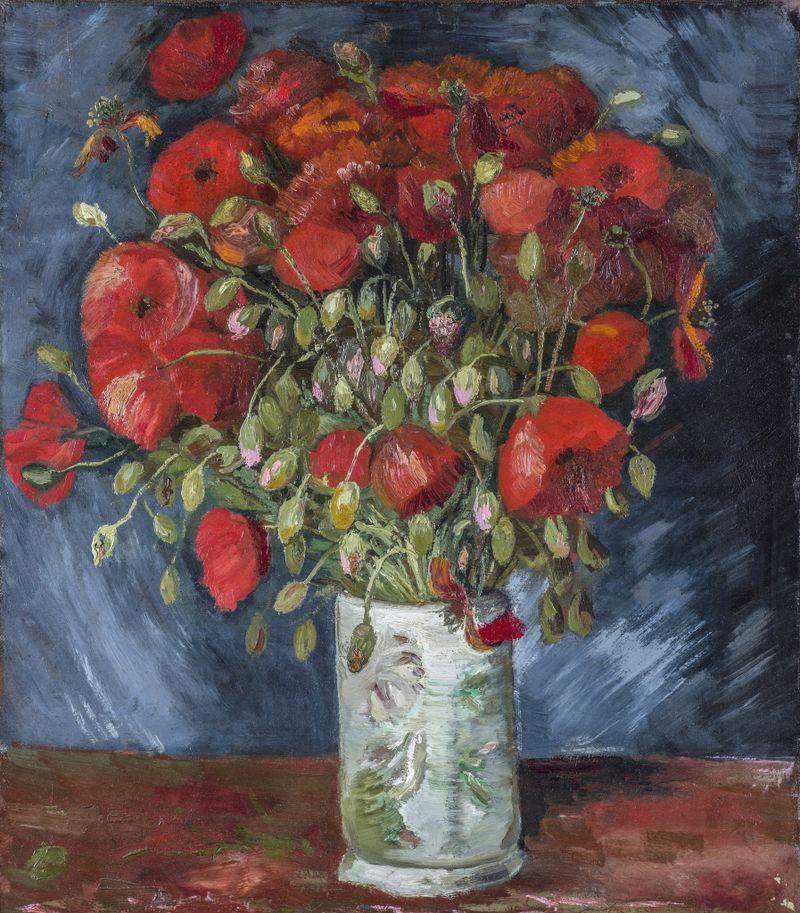Is there a new work by Vincent van Gogh? For the Wadsworth Atheneum, there is no doubt: it is his Poppies
The catalog of works by Vincent van Gogh (Zundert, 1853 - Auvers-sur-Oise, 1890) could be enriched by a new painting, the Vase of Poppies from the Wadsworth Atheneum, the Hartford (Connecticut) museum that is among the most prestigious in the United States. Experts from the U.S. institution, working together with specialists from the Van Gogh Museum in Amsterdam, authenticated the painting, which came to the museum as a donation from Impressionist writer and art collector Anne Parrish Titzell in 1957. The Poppy Vase has always raised doubts about its attribution, but art historians at the two museums now seem to have come to a conclusion.
Meanwhile, van Gogh may have painted the work in 1886: the style recalls that of a group of paintings the Dutch artist executed shortly after his arrival in Paris in the spring of 1886. The vibrant, luminous colors fit well with the palette the painter was using at the time, and the subject matter is one that van Gogh used to frequent during his stay in Paris (especially in the spring, when he had easy access to colorful flowers. “As for what I am doing,” he wrote at the time in a letter to his artist friend Horace M. Livens, "I lacked the money to pay for models, otherwise I would have given myself completely to figure painting. I did a series of color studies, though, painting simple flowers, red poppies, blue cornflowers and forget-me-nots, white and pink roses, yellow chrysanthemums, all looking for opposites of blue and orange, red and green, yellow and purple, and looking for les tons rompus et neutres to harmonize the brutal extremes.")
The Wadsworth and Van Gogh Museum restoration labs also conducted technical analyses of the painting: in particular, X-ray analysis and infrared reflectographs revealed with great clarity that there is another painting beneath the painting’s surface: this was yet another clue that allowed for a deeper study of the technique by which the Poppy Vase was made, and allowed the experts to arrive with greater certainty at the conclusion that the painting could be the work of van Gogh.
“It has been a pleasure for our museum to work together with the Wadsworth Atheneum on this project,” said Louis van Tilborgh, a Van Gogh Museum researcher, professor of art history at the University of Amsterdam and one of the world’s leading van Gogh specialists. “When the catalog of van Gogh’s work compiled by De la Faille was published in 1970,” he added, "it was regarded by many as a kind of interim report. Indeed, it contained too many indecisions about dating and attribution to reach the conclusion that a firm, unequivocal, and authentic canon of van Gogh’s work had been established. Now, almost fifty years later, it can slowly but surely be said that much real progress has been made on the study of van Gogh’s art. Some of these indecisions even had taken root, and the Flower Vase was among them." Wadsworth Atheneum director and ad, Thomas J. Loughman, spoke of an “extraordinary collaboration”: “these studies,” he stressed, “have revealed that we still have much to learn about Vincent and his path as a painter.”
After laboratory examinations, the Vase of Poppies will return to the Wadsworth Atheneum starting next April 26, then in the fall it will leave for Germany where it will be on display at the Van Gogh: Still lifes exhibition, entirely devoted to the painter’s still lifes, from October 26 until February 2, 2020 at the Barberini Museum in Potsdam. This will be an opportunity to compare the work with certain paintings by van Gogh.
Pictured is the painting attributed to van Gogh.
 |
| Is there a new work by Vincent van Gogh? For the Wadsworth Atheneum, there is no doubt: it is his Poppies |
Warning: the translation into English of the original Italian article was created using automatic tools. We undertake to review all articles, but we do not guarantee the total absence of inaccuracies in the translation due to the program. You can find the original by clicking on the ITA button. If you find any mistake,please contact us.





























